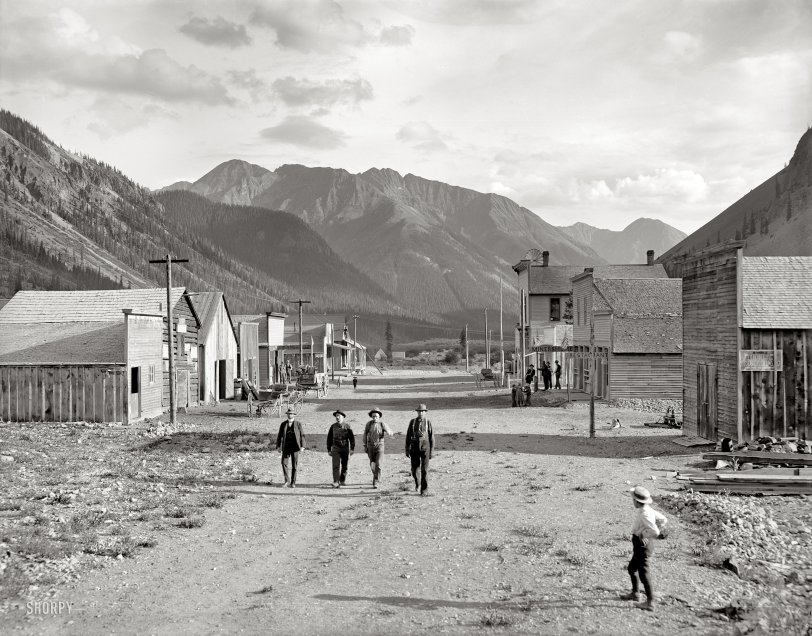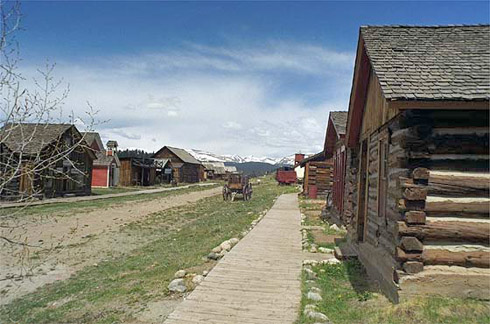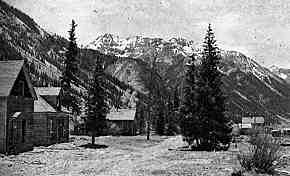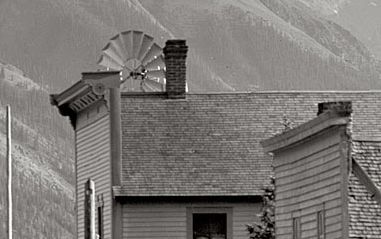


Framed or unframed, desk size to sofa size, printed by us in Arizona and Alabama since 2007. Explore now.
Shorpy is funded by you. Patreon contributors get an ad-free experience.
Learn more.

- Texas Flyer wanted
- Just a Year Too Soon
- WWII -- Replacing men with women at the railroad crossing.
- Yes, Icing
- You kids drive me nuts!
- NOT An Easy Job
- I wonder
- Just add window boxes
- Icing Platform?
- Indiana Harbor Belt abides
- Freezing haze
- Corrections (for those who care)
- C&NW at Nelson
- Fallen Flags
- A dangerous job made worse
- Water Stop
- Passenger trains have right of way over freights?
- Coal
- Never ceases to amaze me.
- Still chuggin' (in model form)
- Great shot
- Westerly Breeze
- For the men, a trapeze
- Tickled
- Sense of loneliness ...
- 2 cents
- Charm City
- What an Outrage
- Brighton Park
- Catenary Supports
Print Emporium
Eureka: 1900

Eureka, Colorado, circa 1900. 8x10 inch dry plate glass negative by William Henry Jackson. Detroit Publishing Company. View full size.
Eureka Lodge
I've stayed many times up on the ridge heading to Animas Forks in a boardinghouse started but never finished by S.G. Martin of Martin Mining and Power in the 1920s. It is now known as Eureka Lodge.
Change in Weather
I looks sunny now, but in 1888 this area (including nearby Animas Forks) got 25 feet of snow over a 26-day period. I guess this helps explain why most of the population left during the winter!
Perspectives
Am I the only person whose mental picture of these towns, and of what goes on in them, has been permanently altered by "Deadwood"?
Curated
Here's a museum of similar structures in (sorta) nearby Fairplay that I visited with my folks 20 years ago.
http://www.ghosttowngallery.com/htme/southpark.htm

Life in a mining town
A good read on what life was like in a mining town is "The Story of an Ordinary Woman" by Ann Ellis. She lived in Bonanza, south of Leadville. In the early 1980s there were just two families living there.
Now and Then
John Fielder is a Colorado photographer who has published several books where he has set up shots, carefully standing where another photographer did over 100 years earlier. The pages place the images side by side for the reader to compare the changes or marvel that a mountain view is still the same.
http://www.amazon.com/Colorado-1870-2000-William-Henry-Jackson/dp/156579...
Eureka 1885
From the 1885 edition of Crofutt's Grip-Sack Guide to Colorado:
Eureka -- San Juan county, is a small mining camp, situated in the extreme northern part of Baker's park, on the Rio de las Animas. The town consists of one store, hotel, a dozen buildings, one smelting works and a population of nearly 200. The ores of this region are in general argentiferous galena, of high grade, grey copper accompanying. Some of the best property at this place is locked up by litigation, which is a certain guarantee that it is rich in minerals. It is five miles south from Animas Forks and nine miles north of Silverton; stages daily; fare, $1. -- See Post Roads, No 121. Tour Seven.
Post Roads. 121. From SILVERTON, northeast 5 miles to Howardsville; 4 miles to EUREKA; 5 miles to ANIMAS FORKS; and 3½ miles to MINERAL POINT; total, 17½ miles. Hack.
Slow Decay
Abandoned before WWII, Eureka looked like this in the 1960s.

Excuse me please Sir!
Might you direct me to the nearest suntan parlor and nail salon?
Livery
The first structure, other than tents, was probably the stable on the left. Rough hewn logs chinked with flat rocks and probably some pine pitch and bark. It was added to on its left an office and home for the owner. The newer structure on the stable's right looks like a recent expansion to the stable capacity, but it doesn't have the pole for lifting the hay into the loft yet. Might be brand new.
The closest structure on the right looks like it was the second one to go up, with its wide vertical boards (someone had a sawmill to cut trees into boards somewhere near) and narrow boards to cover the gaps. It may have been a warehouse for tools and equipment for mining, to sell or to store. Most subsequent structures have horizontal boards for better watershed and ease of construction
It's interesting to see the gradual refinement of materials and construction as the town went together over a period of years. My guess is it came together over about 30 years, maybe less.
Be interested in what the children are finding so fascinating with the drainage hose coming out of the restaurant door. Drinking? Washing? Or just kids doing what kids do?
The Saloon and the Restaurant are flying the flag. Maybe it's the Fourth of July!
Ghost Town
Whenever I see the still-surviving "ghost town" villages, I tend to always think that it's very neat, but there was certainly more going on in the village that wasn't preserved. But according to this, nope -- that might just be pretty much it!
Love this photo. I wonder what the special is at the Minershome Restaraunt tonight? I think I'll ask the post leaner.
Also thanks to John Howard for that shot of the mountains today. Identical angle and everything!
[The Miners Home was probably a boardinghouse. - Dave]
Eureka '00
Thanks for your post Dave. This picture is incredible. There is even someone on the roof of the last structure on the left. The children of this town frame the men in this photo really well.
Our Gang
I can't get over the children on the street. Must have been quite an experience growing up there.. I'd like to know more about them and what it was like for them in a frontier mining town.
Brrr
Have jeeped this area many times over the years. The elevation of the plain is around 10,000 feet. Engineer Pass is around 12,000. Too high for any agriculture or ranching aside from maybe sheep herding in the summer. Winters for the miners who stayed were brutal. Beautiful in the summer, though.
And the same scenery in Google Earth
I have a passion for diving into Shorpy's photos by help of Google Earth. It is an inexpensive way of traveling around North America (where I've never really been to). This photo was pretty easy: I just searched Eureka Colorado and there I stood almost precisely on the spot where William Henry Jackson once stood!
I saw the same view, but all the houses were gone, completely disappeared. Why, where? My bet is the river. Waters flushed them gradually away. Any other bets?
[Most of the smaller Colorado mining towns were gone by mid-century for economic reasons. During World War 2, rail access to Eureka and other settlements in the Animas Valley disappeared when the tracks were taken up for scrap, another nail the coffin. - Dave]
Power poles
Wow. What a picture. But the future is already evident with the power poles. Amazing photo. Thanks for sharing.
[Those might be telephone or telegraph wires. - Dave]
Children
It's interesting that one rarely thinks of Western-town images, like this one, in terms of the town's children -- but I can see six small children in this one photograph, including a little girl.
I'd love to know what that man is doing on the porch roof 'way back there. Sadly we'll never find out.
The negative
Where do you start with proclaiming this image to be otherworldly? I just can't get over the tonal range of Jackson's negatives. He pulled off this same sort of light to dark ratio in a series that Shorpy published from Mexican railroads. And then in the swamps of Florida. I just don't get it and believe me folks, this isn't about Photoshop.
[It is, to a certain extent. All of these images are adjusted using the Shadows & Highlights filter in CS4. It's what brings out detail in overexposed areas (clouds) as well as in the shadows. Below: unadjusted. - Dave]

Zero horse town
At first I was thrown by the lack of horses on the wagons, being conditioned to your photos of NYC etc. with dozens of horses hitched up. Then I realized that you don't need a horse to get across town, as those gents in the foreground are demonstrating.
And those hills are just waiting for some ski lifts full of rich tourists.
CinemaScopization
We've had plenty of colorization around here, but John McLaren's comment has inspired me to format this scene to the actual CinemaScope aspect ratio of 2.35:1.
Left to right: Lee Van Cleef, Robert J. Wilke, Thomas Mitchell, Gary Cooper.

Draw, Pardner
If this group of four were packing guns one would think they were heading for the OK Corral.
All gone
No remnants appear to exist today:
A 'tighter' shot by way of comparing the mountains in the two, but I think it still shows at least some portion of where the structures used to stand. Below: remains of the Sunnyside Mill.

Refreshing
A welcome break from the DC and NY cityscapes.
A dandy?
The dandy in the front left with the crease in his pants looks like a bearded Clint Eastwood! I don't know if I would call him that to his face. But where are all the horses at the hitching posts?
Tarnation!
Will you look at the slope behind the town on the right. That's just screaming avalanche territory. Just behind the tents in the right background, there's a possible sign of an old avalanche washing up across the valley and into the trees on the other side. Still, if it's around today, it managed to survive and most of these mountain mining camps seemed to burn down more often than being buried.
CinemaScope
With this picture we can appreciate how faithful the Hollywood set designers were in portraying pioneer towns in those iconic shoot 'em ups directed by John Ford and others. This looks like the movie set in Old Tucson where they shot many westerns.
Kids!
I love the two little kids behind the four men in the foreground. One of them is wearing a huge hat!
Architecture
Does anyone know the architectural term for facades that obscure the pitch of the roof from the front. Is it decorative or does it have a function?
["False fronts." They turn any shack into an edifice. - Dave]
Sofa Size
My life would be complete if I could have this blown up huge, along with the Longacre Square 1904 post from today, and hang them facing each other in the same room. It's "Reservoir Dogs" meets "Bull Durham." Couldn't be more perfect.
Some have it, some don't
This photo illustrates what the French mean by "je ne sais quoi." Whatever it was, William Henry Jackson had it.
Wow
Stunning location. You wouldn't wanna be accusing these boys of cheatin' at poker now would ya.
Yeeee-Haaaa!
On New Year's Eve I was just over the hill from Eureka in Silverton, where the "wild west" mentality hasn't been gentrified out of the townsfolk....yet. At the stroke of midnight a small rowdy crowd tumbled out of a saloon and someone hollered "yeeee-haaaa" and fired a pistol in the air to ring in 2010.
Hoping these places don't change too much ...
[Silverton is one of my favorite Western towns, along with its bigger neighbor Ouray. A jeep trail called the Alpine Loop connects them, with ghost towns (including Eureka) and ore mills along the way. - Dave]
Spectacular
What a find. This picture is worth a few hundred thousand words. Thanks for bringing it to life, Dave.
Satellite Dish
Imagine my shock at seeing the satellite dish on the roof of one of the buildings!
Oh, wait a minute...........it's only a windmill.

























.JPG)
On Shorpy:
Today’s Top 5